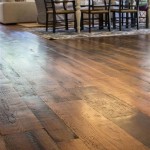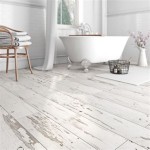Vinyl flooring adhesive is an essential element in installing vinyl flooring. It is used to securely attach the vinyl planks to the subfloor. Without the use of adhesive, the vinyl planks will not stay in place, making them prone to buckling and peeling.
Types of Vinyl Flooring Adhesives
Vinyl flooring adhesives come in a variety of forms. The most common type of adhesive is a pressure sensitive adhesive (PSA). This type of adhesive is designed to bond quickly and securely to the subfloor and vinyl planks. It is easy to apply and requires minimal effort on the part of the installer. Other types of vinyl flooring adhesive include contact cement, which is more time consuming to apply, and peel and stick adhesives, which are pre-applied to the back of the vinyl planks.
How to Choose the Right Vinyl Flooring Adhesive
When selecting a vinyl flooring adhesive, it is important to consider the type of subfloor and the type of vinyl flooring being installed. In general, pressure sensitive adhesives are suitable for most subfloor types and vinyl flooring, but contact cement may be required for certain types of subfloors or vinyl planks. It is also important to choose an adhesive that is designed for use with vinyl flooring. Other adhesives may not provide the necessary bond strength or may cause damage to the vinyl planks.
Preparing the Subfloor for Vinyl Flooring Adhesive
Before applying vinyl flooring adhesive, it is important to prepare the subfloor. This includes cleaning the surface to remove any dirt, dust, and debris. The surface should also be level, dry, and free of any oils or waxes that may prevent the adhesive from bonding properly. Once the subfloor is prepared, the vinyl flooring adhesive can be applied.
Applying Vinyl Flooring Adhesive
Vinyl flooring adhesive can be applied using a brush, roller, or trowel. For pressure sensitive adhesives, it is important to follow the manufacturer’s instructions for application. The adhesive should be applied in a thin, even layer to the entire subfloor. Contact cement should be applied in a zig-zag pattern to ensure proper coverage. After the adhesive has been applied, the vinyl planks can be laid and pressed down to ensure a secure bond.
Caring for Vinyl Flooring With Adhesive
Once the vinyl flooring has been installed, it is important to care for it properly. This includes avoiding the use of harsh chemical cleaners, which can damage the adhesive. Mopping the floor on a regular basis with a mild soap and warm water solution is the best way to maintain the bond between the vinyl planks and the subfloor. It is also important to avoid dragging heavy furniture or appliances across the floor, as this can weaken the bond.
Conclusion
Vinyl flooring adhesive is an important part of the installation process. It is important to choose the right type of adhesive for the job and to take the necessary precautions when preparing the subfloor and applying the adhesive. With the right care and maintenance, vinyl flooring with adhesive can last for many years.














Related Posts








